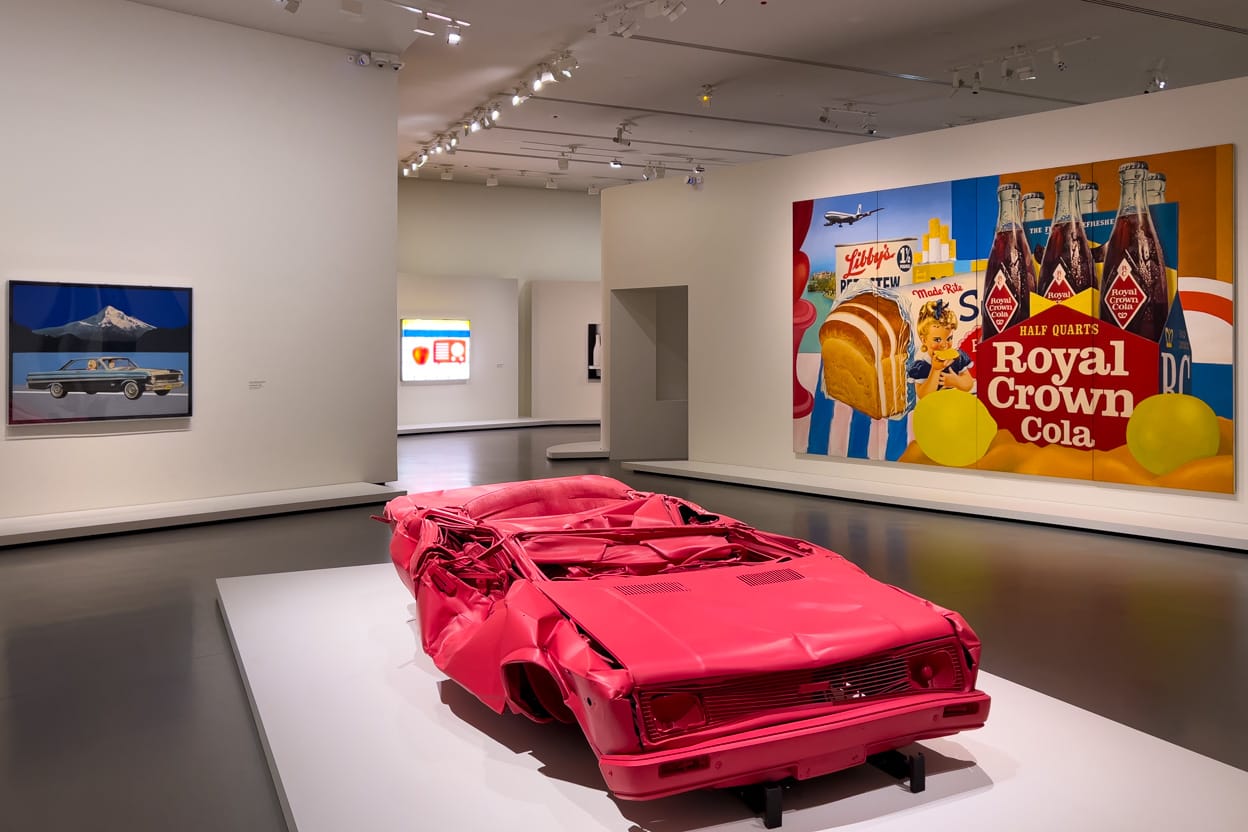
I enjoyed the Tom Wesselmann exhibition at the Fondation Louis Vuitton much more than I had expected and not because of all the brightly coloured pin-ups. Tom Wesselmann (1931-2004) was one of the principal exponents of Pop Art. He is best known for his Great American Nude series, which he made between 1961 and 1973, but as the exhibition shows his still life assemblages are just as iconic.
I was surprised to learn that Tom Wesselmann never had a retrospective during his lifetime. Sure, he had solo gallery shows, but none of the major art institutions in the U.S. organized a career survey. It’s not that he has been overlooked, from the 1960s onwards his work has been included in numerous group shows and in 1963 MoMA acquired his “Great American Nude #2” (1961), but the exhibition at the Fondation Louis Vuitton is actually the largest ever showcase of his work.
Perhaps because of the frank sexuality of his Great American Nudes curators have been at a loss what to do with him. However, “Triptych II (Beach Girl)” (1963) by Marjorie Strider, a painting of a woman in bikini with protruding 3D sculpted breasts, and Evelyne Axell’s painting of a woman licking an ice cream, both of which are included in the exhibition, are just as suggestive if not explicit as any of Wesselmann’s works.
Here’s the thing: Tom Wesselmann’s work of the 1960s and 70s has a distinct signature and that is some of the highest praise for an artist. You cannot mistake his work for that of another artist.
The exhibition opens with a grand overview of Pop Art with all the usual suspects, Andy Warhol, Jasper Johns, Roy Lichtenstein, Robert Rauschenberg, James Rosenquist and Claes Oldenburg. The organizers of the exhibition have done well to also include some woman artists to show that Pop Art was not exclusively a masculine affair.
In the second room the work of Tom Wesselmann takes centre stage. In the early 1960s Wesselmann began painting large still lifes, which showcase the abundance of postwar America: huge subs, cola bottles, oranges and ice creams in bright colours. I’m not quite sure whether to consider them as a celebration or a critique of consumer culture. In any case they are a sign of the times. A separate room with some wonderful collages by Kurt Schwitters, Hannah Höch and Tadanori Yokoo puts these works into perspective and shows Pop Art's roots in Dada.
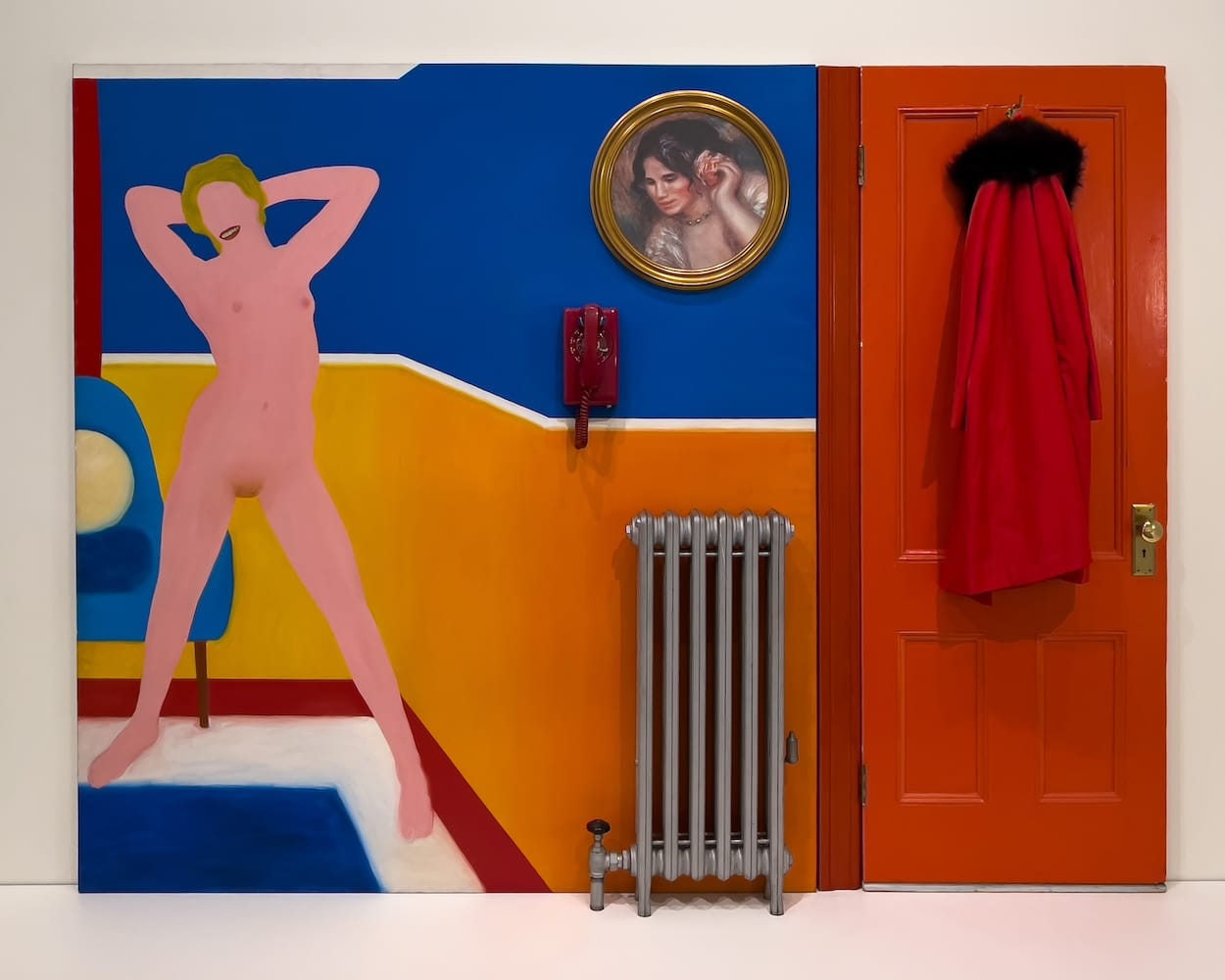
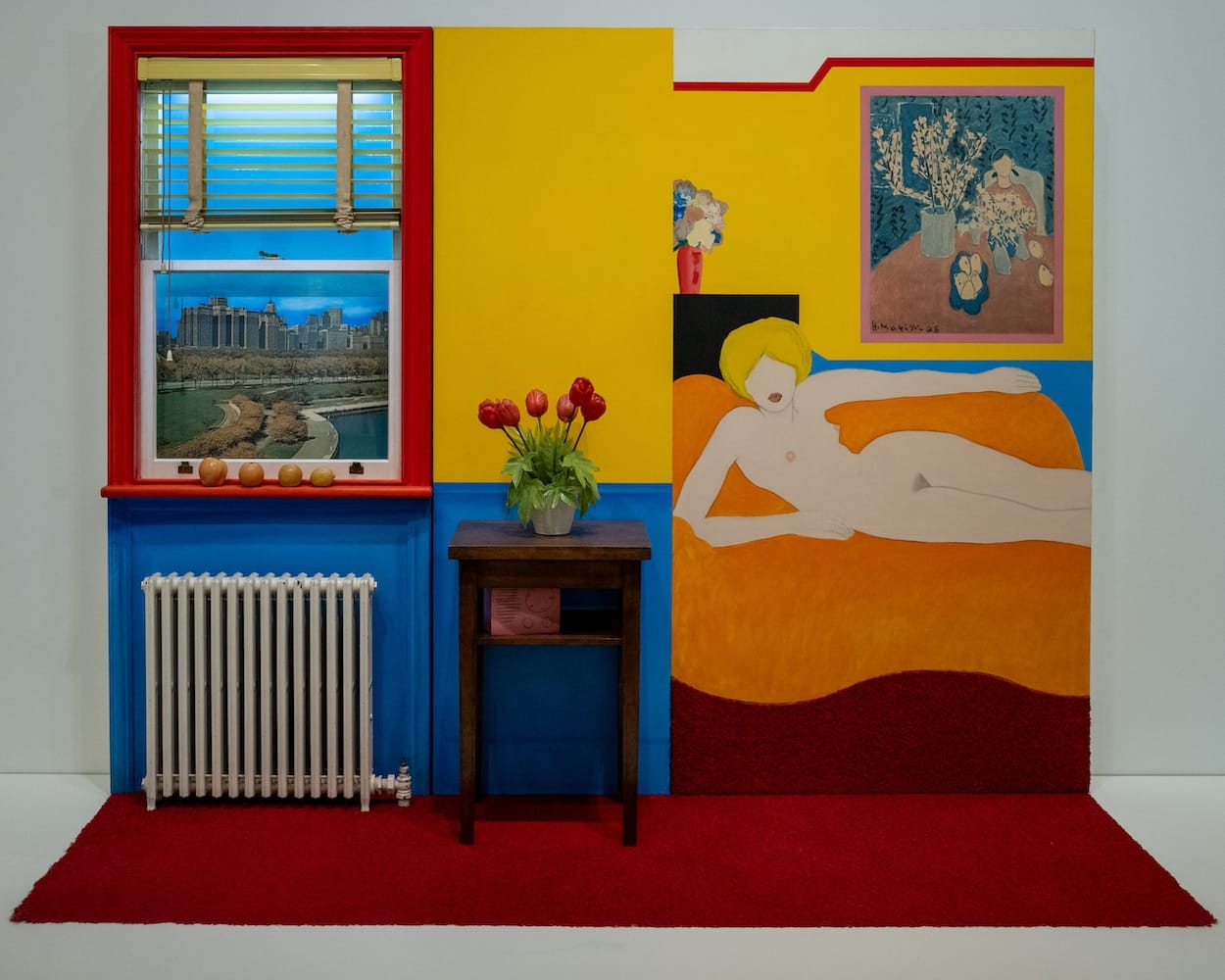
Tom Wesselmann, Great American Nude #44, 1963 (left) and Great American Nude #48, 1963 (right)
In the 1960s and early 1970s, Tom Wesselmann began creating large assemblages incorporating radiators, towels, doors, telephones, radios and television sets. Amazingly the latter still work. At around the same time he began his Great American Nudes series of which he would make one hundred in total. These celebrations of the female form stand in a long tradition, dating back from Édouard Manet’s “Olympia” (1863-65) and Francisco de Goya’s “The Naked Maja” (1797-1800) all the way to Titian’s “Venus of Orbino” (1538). But Wesselmann’s main art historical reference was Matisse. The reference is hard to miss, because he even included a reproduction of Matisse’s “The Romanian Blouse” (1940) in “Great American Nude #26” (1962).
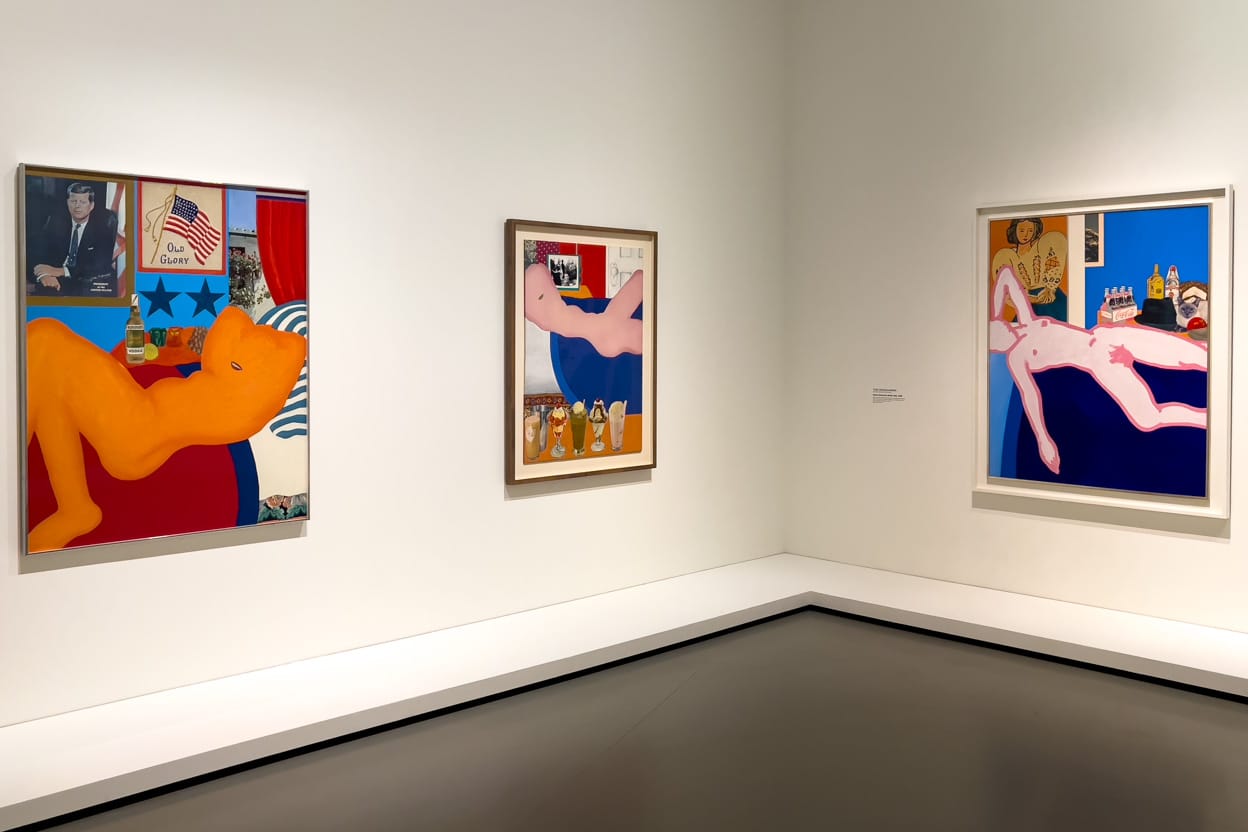
The exhibition continues on the first and second floor with Tom Wesselmann’s Bedroom Paintings, his Mouths and Seascapes and work by contemporary artists, including Jeff Koons and Ai Weiwei, which testify to the enduring influence of Pop Art. Mickalene Thomas is represented with four wonderfully exuberant collages of black women in a room of her own. The inclusion of her work is fitting. As she explains in an interview, for several years she has been conducting a visual conversation with Wesselmann.
In the 1980s Tom Wesselmann began to create works at an ever grander scale. These works, which look more like stage props, are not among his best. At the end of his life he redeemed himself with a series of metal cut outs in homage to Matisse.
“Pop Forever. Tom Wesselmann & …” is the kind of exhibition that only the Fondation Louis Vuitton can pull off. I wouldn’t be surprised if the insurance value of the works on show is close to USD 1 billion. Andy Warhol’s “Shot Sage Blue Marilyn” was sold at auction in 2022 for USD 195 mln. In 2010 Jasper John’s “Flag” (1958) fetched USD 110 mln. In 2013 one of Jeff Koons’s “Balloon Dogs” sold for USD 58 mln at Christie’s. Still, I would have preferred if it had been either a Tom Wesselmann retrospective or a Pop Art exhibition. In its present form it does make for a fun and impressive exhibition, albeit with a somewhat awkward title.
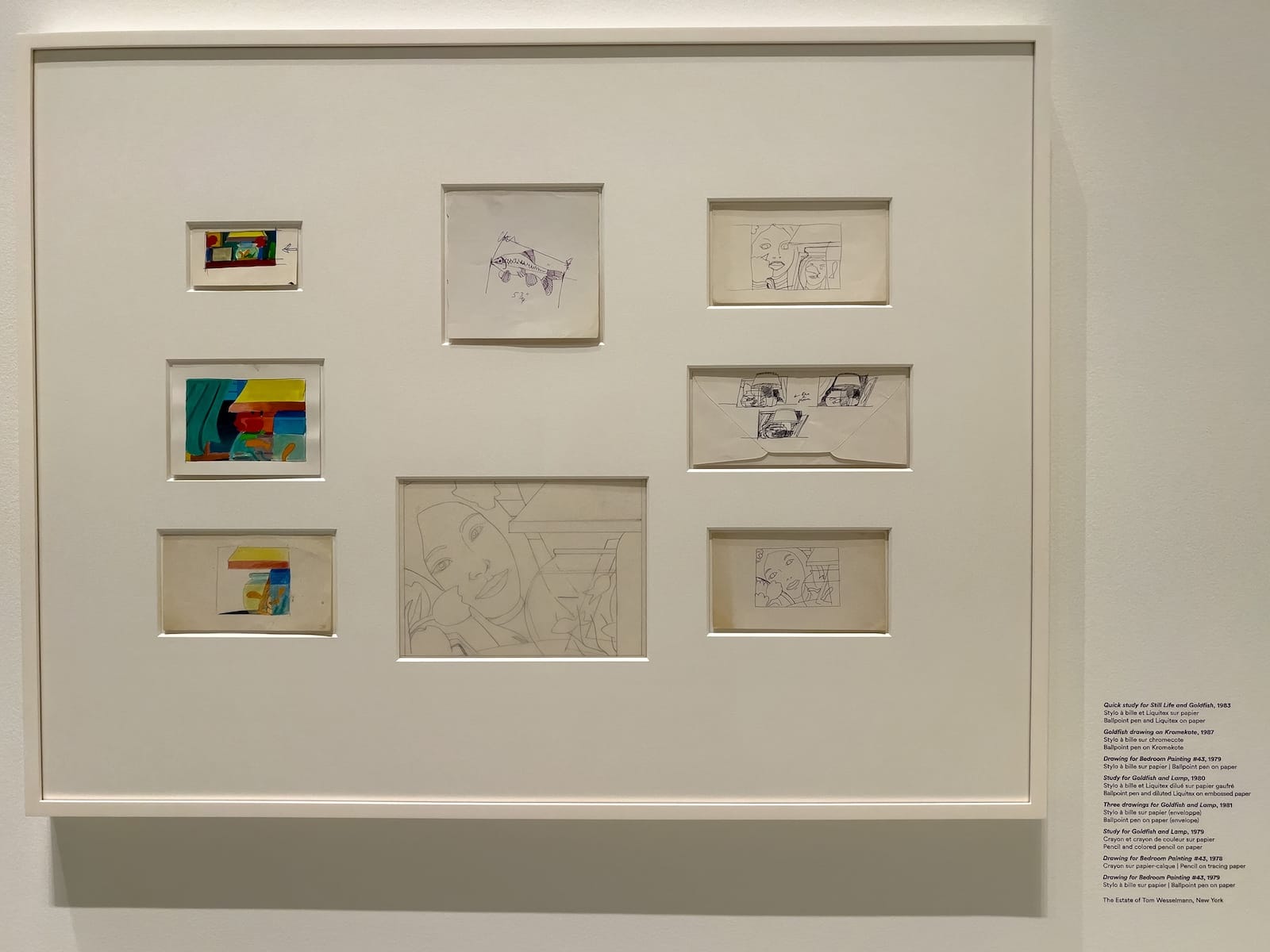
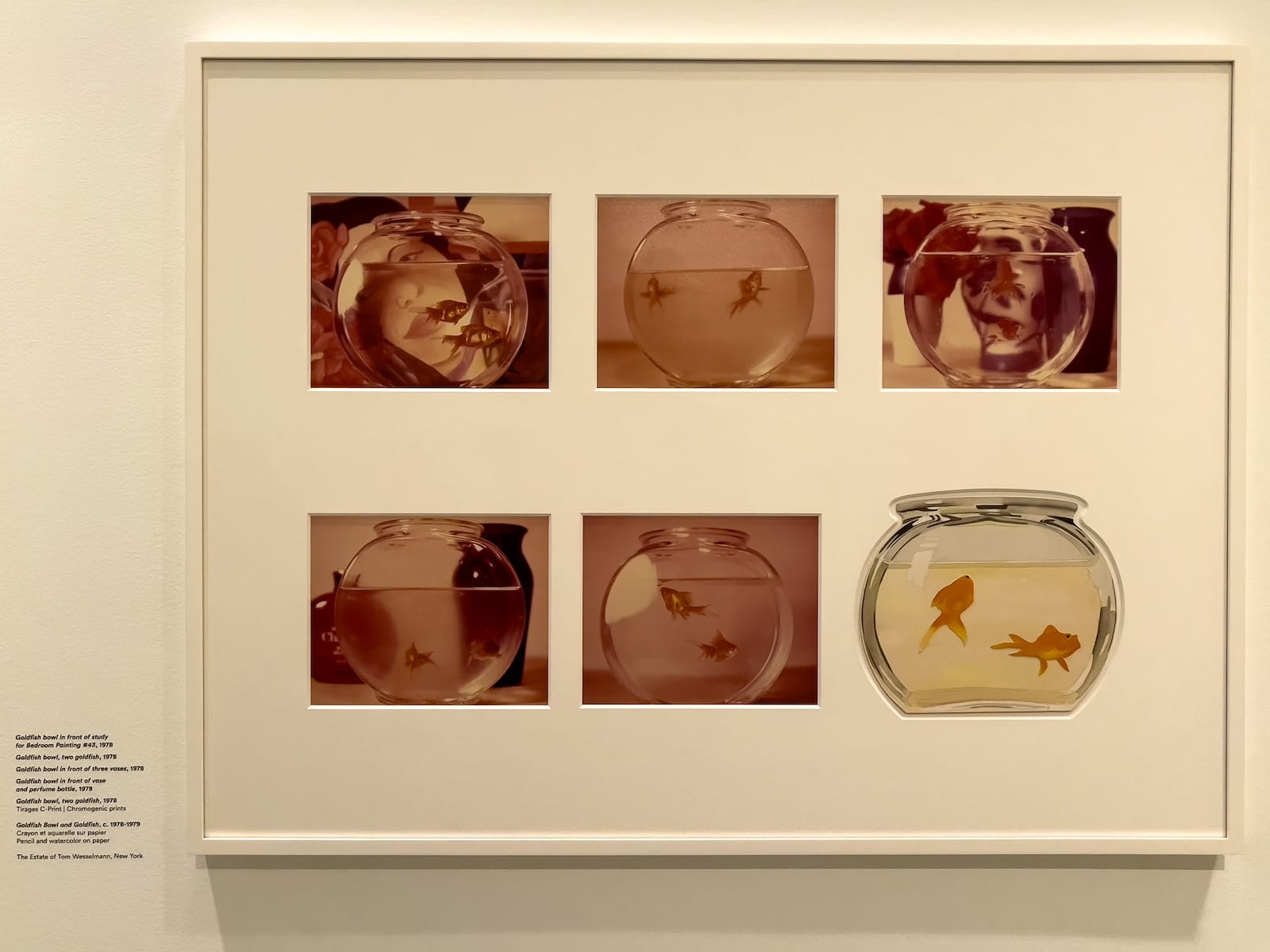
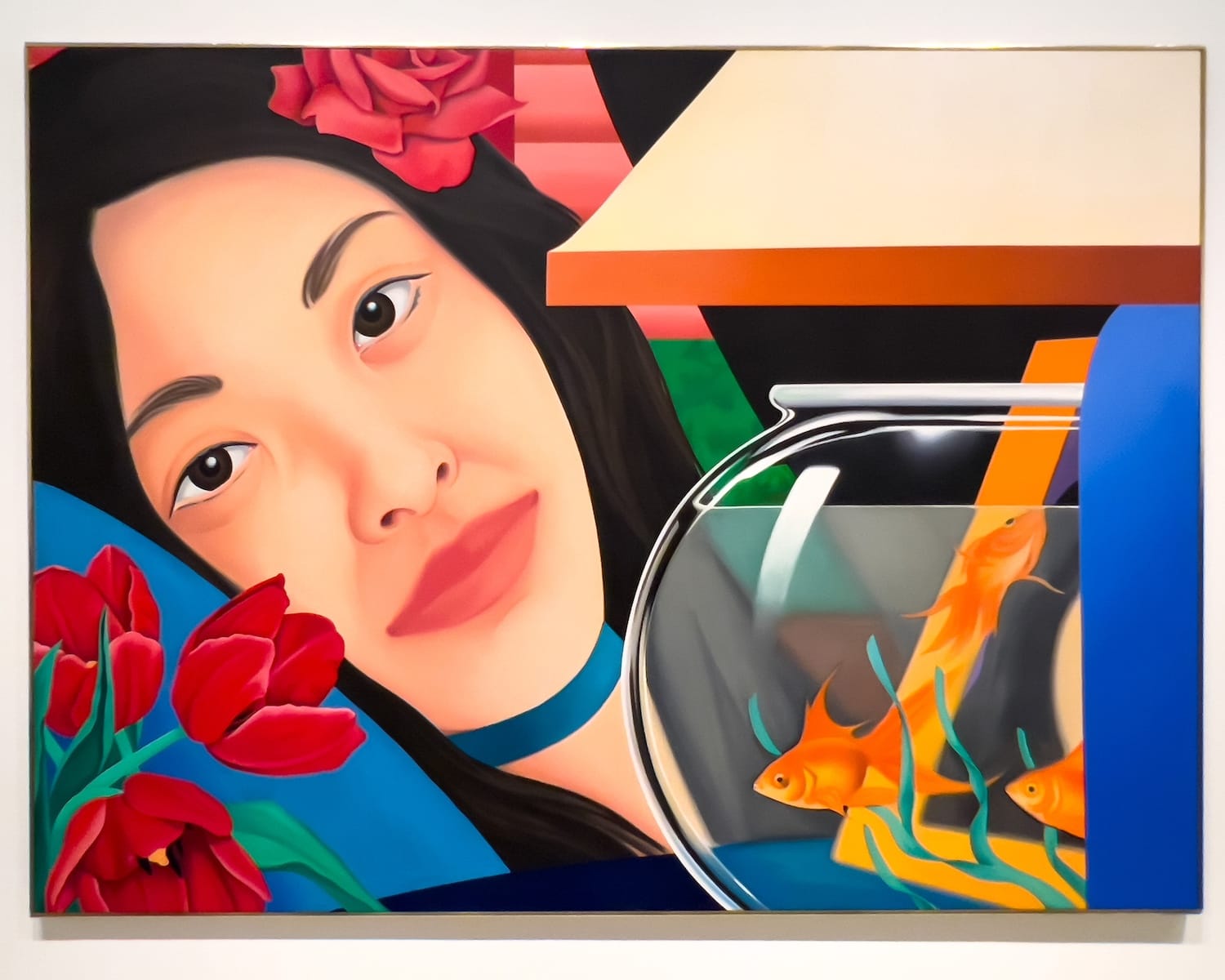
Tom Wesselmann, Studies for "Bedroom Painting #43" and the final painting
I particularly liked the room with Wesselmann’s drawings and sketches, because I always enjoy getting a peek inside an artist’s working mind. It might come as a surprise that Wesselmann worked methodically and meticulously. He made numerous preparatory sketches to get the composition and the colours right, before creating one of his large-scale paintings or assemblages. He closely studied a bowl of gold fish before creating “Bedroom Painting #43” (1979) and he made multiple sketches before hitting on the final composition of “Seascape #1” (1965).
Pop Forever. Tom Wesselmann & … is at the Fondation Louis Vuitton, Paris through 24 February 2025.